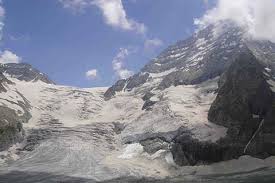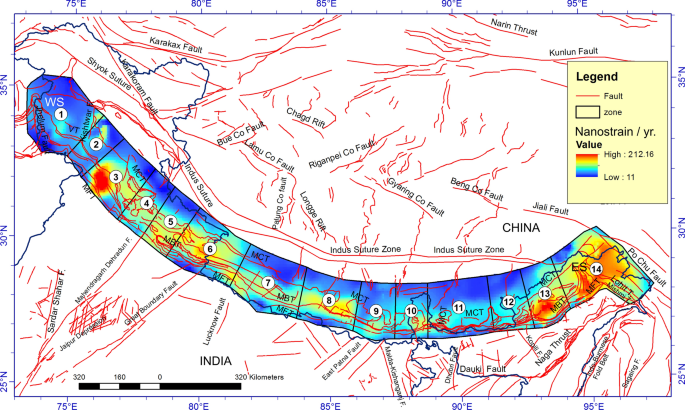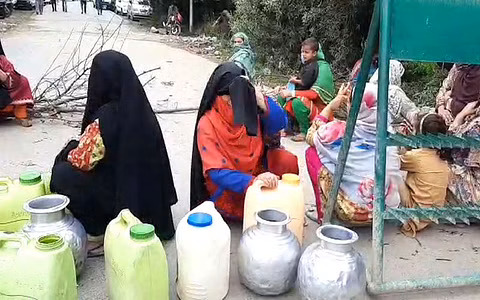Glaciers in Jammu and Kashmir are receding and the state government should initiate “ corrective measures” in this regard, an official report has revealed.
 The State Action Plan on Climate Change Report says the government should promote operation of solar- driven transport system in eco fragile environs and tourist destinations in the Valley.
The State Action Plan on Climate Change Report says the government should promote operation of solar- driven transport system in eco fragile environs and tourist destinations in the Valley.
“ Use of vehicles by locals as well as forces in upper regions of the Valley and helicopter services to fragile zones are among numerous causes of depletion of glacial mass in J& K as emission of carbon monoxide heats up surroundings which causes of melting of glaciers,” said an official, who was part of the committee that prepared the report.
“ Abrupt change in weather conditions and increase in rainfall and incidents of cloudbursts needs introspection.
The government should not pass it as a nature’s fury.
There are causes behind it for which we, as a society, are responsible and it needs corrective measures and reforms,” the report reads.
It has called for promotion of battery- operated ( charged from solar power) transport systems in tourist places, battery- driven motor boats instead of diesel engine boats ( battery charged from solar module mounted on the boat) and use of alternative fuel instead of diesel to drive machines used for maintenance purposes in lakes to “ avoid further deterioration of eco- fragile areas.” The report says studies conducted during the past three decades by the National Institute of Hydrology Roorkee reveal that glaciers in Ladakh, Zanskar and the Great Himalayan ranges of Jammu and Kashmir are generally receding, and the glacier volume change ranges between 3.6 percent and 97 percent, with majority of glaciers showing a degradation of 17 percent to 25 percent.
“ The 23- km Drang- Drung glacier in Zanskar valley is highly affected by western disturbances ( ablation rate variations between 0.75 cm/ day and 2.67 m/ day during July and August),” the report adds.
Recession patterns of 466 glaciers in Chenab, Parbati and Baspa basins of the western Himalayas have been studied for the period 1962– 2008. Here, according to the report, a reduction in the glacial area from 2077 sq. km to 1628 sq. km and an overall de – glaciation of 21 percent has been observed.
“ Further, quantity of snowfall has reduced ( reported 0.60 m of snow today as compared to 3 m 40 years back in Fakir Gujri). Total loss in extent of glaciers is reported to be 17.8 sq. km between 1911 and 2001,” the report reads.
Citing an example, it says reported retreats in Kolahai glacier range from 112 sq. km to 94 sq. km between 1911 and 2004.
“ Large glaciers are fragmented and small ones have diminished. For example, more or less disappearance of Nijwan Akal glacier in Sindh valley, change in maximum and minimum rainfall in Kashmir valley ( minimum has fallen from 181 mm to 84 mm and maximum from 65.89 mm to 21.7 mm between 1901 to 1994),” the report reads, adding, the “ extent of wetlands also decreased between 1911 and 2004.” The report states that mass losses from glaciers and reductions in snow cover might severely impact the hydrological cycle.
“ Change in the hydrological cycle may affect the spatial and temporal distribution of runoff, soil moisture, ground water reserves and may increase the frequency of droughts and floods. Increased frequency of rainfall and variation in rainfall pattern including extreme events like flood is a challenge to the society,” the report mentions.
It states that economy of the state would also be affected due to recession of glaciers.
“ Economy of the State relies heavily on water intensive sectors like agriculture, horticulture, energy generation, tourism etc. Since most of the water- bodies in the State are supplied by melt- water from mountain ranges, therefore loss of glaciers might reduce the water availability, thus impacting hydro power potential,” it reveals.
GLACIER VOLUME CHANGE:
Between 3.6 %and 97 % DEGRADATION RANGE OF MAJOR GLACIERS: 17% to 25 % TOTAL LOSS IN EXTENT OF GLACIERS: 17.8 sq. km between 1911 and 2001 RETREATS IN KOLAHAI GLACIER RANGE: 112 sq. km to 94 sq. km between 1911 and 2004. MAJOR THREATS ·Severe impact on hydrological cycle ·Impact on spatial and temporal distribution of runoff ,soil moisture, ground water reserves ·Chances of increase in frequency of droughts and floods ·Impact on water intensive sectors like agriculture, horticulture, energy generation and tourism.






